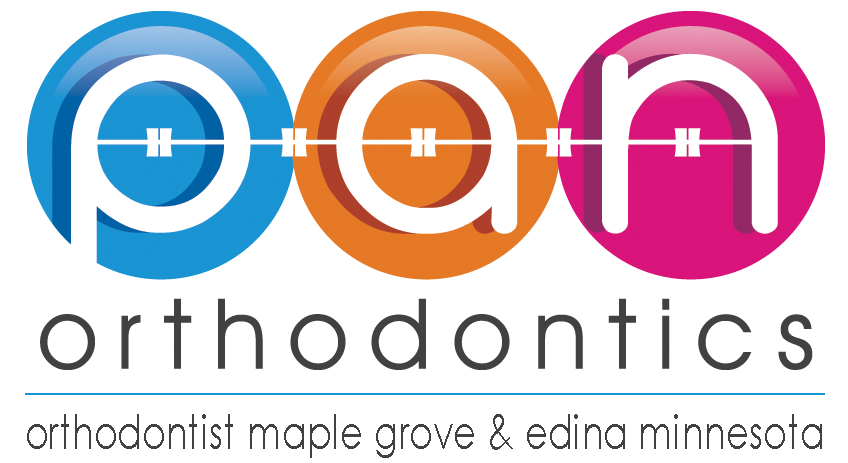Orthodontic Conditions - Cross Bite
A crossbite is a form of malocclusion where one or more teeth has a more buccal or lingual position. This means the tooth is either closer to the cheek or to the tongue than the corresponding tooth in the upper or lower dental arch. In other terms, the crossbite is a lateral misalignment of the dental arches.
Anterior crossbite
An anterior crossbite can be referred to as a negative overjet. It is typical of class III skeletal relations.
Primary/mixed dentitions
An anterior crossbite which is present in a child who still has their baby teeth or mixed dentition, may occur from either dental misalignment or skeletal misalignment. Dental causes may be from the displacement of one or two teeth, where the skeletal causes involves mandibular hyperplasia and/or maxillary hypoplasia.
Dental crossbite
An anterior crossbite as a result of a dental component involves the displacement of either maxillary central or lateral incisors lingual to their original eruption positions. This may occur from delayed eruption of the primary teeth which leads to permanent teeth moving lingual compared to their primary predecessors. This will lead to an anterior crossbite. Upon biting with an anterior crossbite, the upper teeth are behind the lower front teeth and may involve few or all the frontal incisors. In this type of crossbite, the maxillary and mandibular proportions are normal to one another and to the cranial base. Another situation that can lead to a dental crossbite is overcrowding in the maxillary arch. The permanent teeth tend to erupt lingual to the primary teeth when there is crowding. Side-effects that are caused by a dental crossbite can include increased recession on the buccal of lower incisors and a higher risk of inflammation in the area. Other terms for an anterior crossbite due to dental interferences is Pseudo Class III Crossbite or Malocclusion.
Single tooth crossbite
Single tooth crossbites can occur when a primary tooth does not erupt in a timely manner. This results in the permanent tooth erupting in a different pattern which is lingual to the primary tooth. Single tooth crossbites can often be fixed using a finger-spring based appliance. This type of spring is attached to a removable appliance which is used by the patient daily in order to correct the tooth’s position.
Skeletal crossbite
An anterior crossbite from skeletal reasons involves a deficient maxilla and a more hyperplastic or overgrown mandible. Patients who have this type of crossbite will have dental compensation involving proclined maxillary incisors and retroclined mandibular incisors. A proper diagnosis can be made from having the patient bite into their centric relation and showing the mandibular incisors are ahead of the maxillary incisors. This exposes the skeletal discrepancy between the two jaws.
Posterior crossbite
A posterior crossbite is often associated with a narrow maxilla and upper dental arch. A posterior crossbite can be either unilateral, bilateral, single-tooth or an entire segment crossbite. Posterior crossbites are reported as occurring in 7–23% of the population. The most common type of posterior crossbite is the unilateral crossbite. The unilateral crossbite occurs in 80-97% of posterior crossbite cases. Posterior crossbites also occur most commonly in cases of primary and mixed dentition. This type of crossbite is usually present with a functional shift of the mandible towards the side of the crossbite. Posterior crossbite can occur from either skeletal, dental or functional abnormalities. A common reason for developing a posterior crossbite is a difference in size between the maxilla and mandible. Specifically, where the maxilla is smaller than the mandible. Posterior crossbite can cause the following:
- An upper airway obstruction. This occurs when patients with "adenoid faces" have trouble breathing through their nose. They experience an open bite malocclusion which is present with the development of a posterior crossbite.
- Prolong thumb or digit suckling habits which can lead to the constriction of the maxilla posteriorly.
- Extended use of the pacifier past the age of 4 years-old.
Pan Orthodontics Philosophy
To treat our patients as our families and to treat others as how we want to be treated. From your first phone call to the moment your new smile is born, everything in our office is set up to ensure an excellent experience with us. We will always listen to you and improve with your suggestions.
Featuring The Latest Orthodontics Technology
Our Commitment to You
We will continue to keep up with the ever growing digital technologies to improve your orthodontic experience. We also commit to always help you find the most convenient time for your visit with us.




